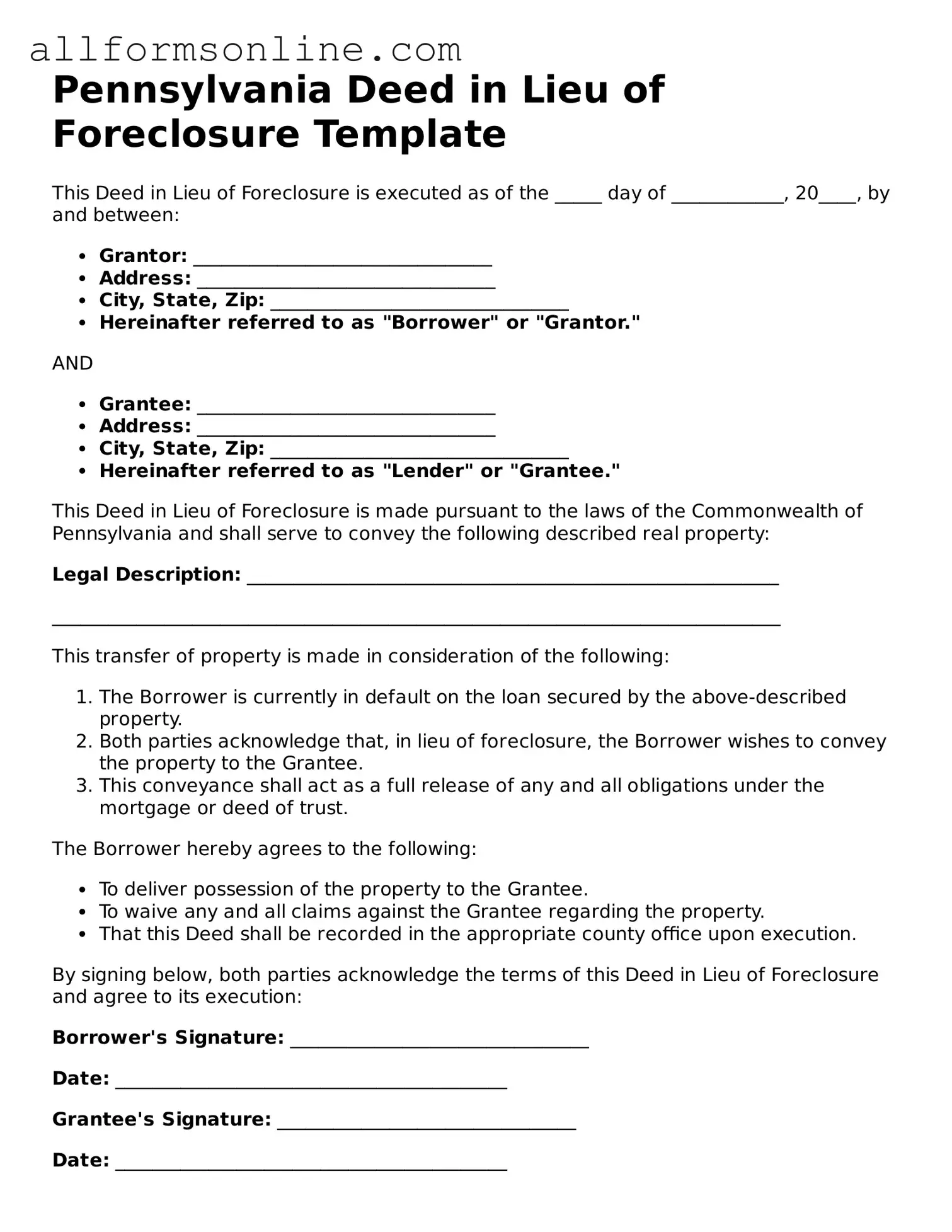What is a Deed in Lieu of Foreclosure in Pennsylvania?
A Deed in Lieu of Foreclosure is a legal process that allows a homeowner to voluntarily transfer the ownership of their property to the lender in order to avoid foreclosure. This option can be beneficial for homeowners who are struggling to make mortgage payments and wish to avoid the lengthy and often stressful foreclosure process. By signing over the deed, the homeowner can typically settle their mortgage obligations and may even be able to negotiate terms that prevent further financial repercussions, such as a deficiency judgment.
Who is eligible to use a Deed in Lieu of Foreclosure?
Eligibility for a Deed in Lieu of Foreclosure generally depends on the lender's policies and the specific circumstances of the homeowner. Typically, homeowners who are facing financial hardship and have exhausted other options, such as loan modifications or short sales, may qualify. It’s essential for homeowners to communicate openly with their lender about their financial situation. Lenders usually require that the property be free of any other liens or encumbrances, so this is another factor to consider before pursuing this option.
What are the benefits of choosing a Deed in Lieu of Foreclosure?
There are several benefits to consider when opting for a Deed in Lieu of Foreclosure. First, it can provide a quicker resolution compared to the traditional foreclosure process. Homeowners may also avoid the negative impact on their credit score that comes with foreclosure. Additionally, lenders may be more willing to work with homeowners to negotiate terms that can lead to a smoother transition, such as potential relocation assistance or forgiveness of remaining debt. This option can also allow homeowners to leave the property without the stress of a foreclosure sale.
What steps should a homeowner take to initiate a Deed in Lieu of Foreclosure?
To initiate a Deed in Lieu of Foreclosure, homeowners should first contact their lender to express their interest in this option. It’s important to gather all relevant financial documents, including income statements, tax returns, and mortgage information, as the lender will likely require this information to assess eligibility. Once the lender agrees to consider the deed in lieu, they will typically provide specific instructions and necessary forms. Homeowners should also consult with a real estate attorney or a housing counselor to ensure they understand the implications and to navigate the process effectively.
